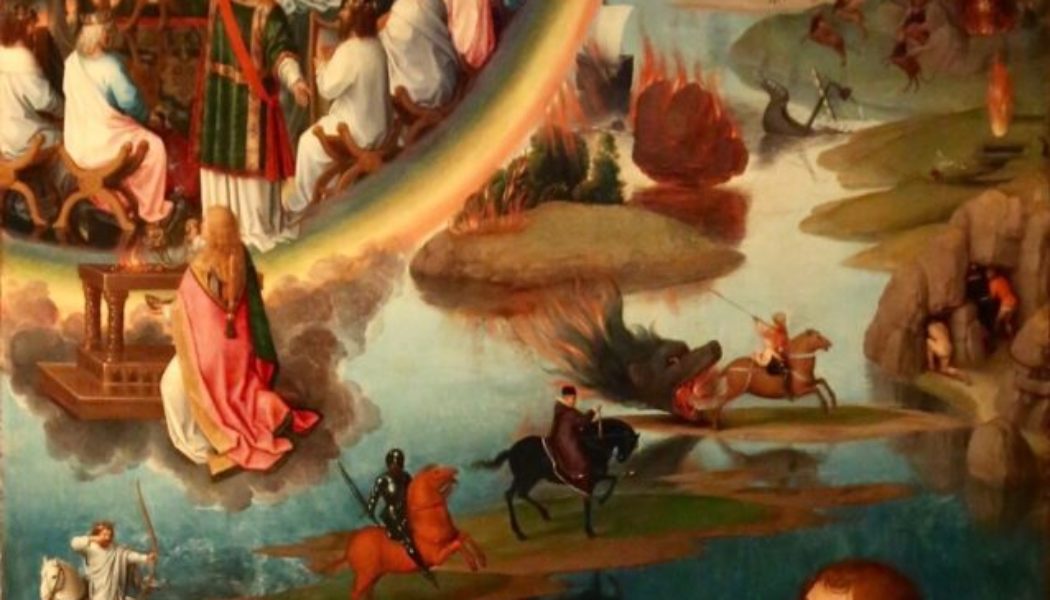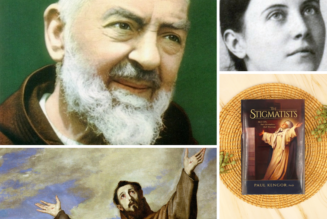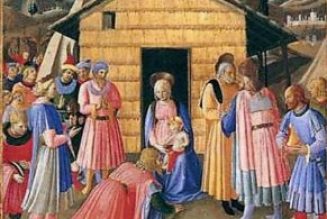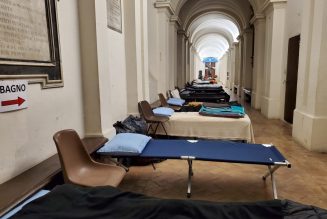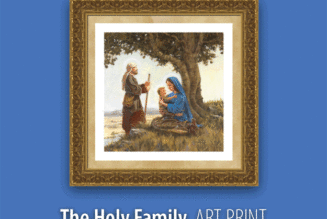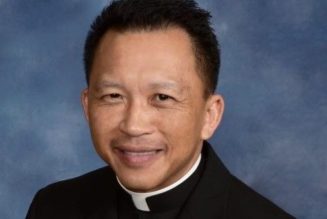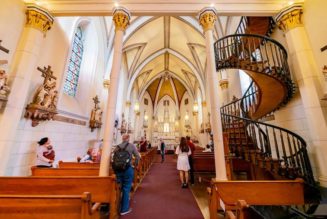Editor’s note: Part I of Dr. Tsakanikas’s entry, “Sinai as Interpretive Key to Genesis: Entering the Cult to Enter the Mind of the Author,” appeared in the January 2023 Bulletin.
The greatest Father and Doctor of the East, St. Gregory Nazianzen, is clear that the Tree of the Knowledge of Good and Evil was a boundary that the immature were not to cross until they had been properly prepared: purified and enlightened as on the slopes of Mount Sinai. St. Gregory is in agreement with the Father and Doctor, St. Ephrem the Syrian, who observes that the Tree of Knowledge was the part of creation that participated in God’s presence. By shrouding the Tree of Life like a veil, the Tree of Knowledge enabled immature man to be in God’s presence and take on God’s likeness in the gift of self that the tree enabled through the obedience of faith.
At the Tree of the Knowledge of Good and Evil, man was to surrender his will in obedience to the Truth: the Lord who promised freedom and fulfillment in the truth. The tree was where man clung faithfully to loving in truth (the likeness of God) by free choices to surrender to God in worship:
“And [God] gave [Adam] a Law, as material for his free will to act upon. This Law was a commandment as to what plants he might partake of, and which one he might not touch. This latter was the Tree of Knowledge; not, however, because it was evil from the beginning when planted; nor was it forbidden because God grudged it to men—let not the enemies of God wag their tongues in that direction, or imitate the serpent. But it would have been good if partaken of at the proper time; for the Tree was, according to my theory, Contemplation, which it is only safe for those who have reached maturity of habit to enter upon; but which is not good for those who are still somewhat simple and greedy; just as neither is solid food good for those who are yet tender and have need of milk.”
Even before reaching the Trees at the center of the Garden and receiving “Contemplation” from God, man was being prepared by the other trees of the Garden to recognize God’s goodness and rightly understand a Holy of Holies when it was approached.
Even before reaching the Trees at the center of the Garden and receiving “Contemplation” from God, man was being prepared by the other trees of the Garden to recognize God’s goodness and rightly understand a Holy of Holies when it was approached. Man was learning to love God with all his heart, mind, and soul, and be brought into a fuller union through love. Just before explaining that all the other trees probably also represented divine concepts, Nazianzen explained that God gave free will to man “in order that good might belong to him as the result of his choice, no less than to Him Who had implanted the seeds of it.” Man was to become like God through exercising his freedom as guided by the truths of heavenly conceptions.
As Part One of this essay argued that Exodus gave final form to Genesis, Nazianzen similarly followed an exegesis in which the Garden of Eden needed to be understood in light of the Tabernacle of Moses. Nazianzen refers to all the trees of the Garden as being signs given to Man and Woman to learn about the things of heaven and so Man and Woman were assigned “to till the immortal plants, by which is perhaps meant the Divine conceptions [θείων εννοιών ίσως or fortasse divinarum cogitationum], both the simpler and the more perfect.”
Because of the assumptions involved in his exegesis, Nazianzen had not made an unjustified stretch in perceiving the meaning of the trees in Eden as being signs and communicating “divine conceptions [or thoughts, cogitationum].” He rightly saw them as partaking in the hidden εννοιών (intentions) and plans of God. If the furnishings of the Tent of Meeting (or Tabernacle) in Numbers were understood to be signs of the greater and more holy things of heaven (cf. Hebrews 9:24), then likewise the trees of Eden (the Garden of God) would be seen as divine and holy conceptions and Nazianzen was reading in accord with a proper historical exegesis and not just a spiritual one. His exegesis showed the same method for reading Genesis and the Edenic narratives through the historical cult that was established in Exodus and Numbers and as experienced at Sinai. Similarly, biblical scholar Margaret Barker argues that St. Basil the Great—Nazianzen’s closest friend—held to such an exegesis in following Origen.
Perceiving that Genesis 1-3 is best read through the final form (or penultimate form) that the Exodus experience established (including the experiences in the Book of Numbers), then looking at the Tabernacle in the Book of Numbers gives explanation to Nazianzen’s mention of trees as “divine conceptions.” According to Numbers, servants who were not inside God’s original covenant of sonship—or the amended priesthood (the Levitical one)—were not only forbidden to touch the furnishings of the Tabernacle, they were not supposed to even look upon them: “they shall not go in [to the Tent of Meeting] to look upon the holy things even for a moment, lest they die” (Numbers 4:20). This is why the direct sons of Aaron had to wrap the Tabernacle furnishings before the Kohathites could touch or transport them. (It should be noted that “Man” and “Woman” of Genesis 2 were in the Garden and foreshadowed participation in divine filiation and sonship and so could look upon the trees, except the one that was shrouded.)
The Tent of Meeting was much more than a sign and symbol of Eden or pattern of union between heaven and earth. Its very presence and organized ritual gave hope that all mankind would again be granted entrance into the Holy of Holies.
Seeing with eyesight was viewed as a kind of touching with the eyes of that which is holy and pleasant and meant only for those in the Tabernacle to contemplate during their assigned service. The furnishings became holy once the kabod, or Glory, descended upon the Tabernacle as it had on Mount Sinai and Moses had arranged the furnishings according to the heavenly pattern shown to him. Those who were not priests by direct family lineage of Aaron were forbidden to see the arrangement or touch the “most holy” objects and furnishings involved with the Holy of Holies from that point forward (cf. Numbers 4:20). These furnishings (or “trees” as some lampstands like the menorah were called) were concepts of heavenly realities (even mysteries of creation) and not for the “immature” nor “greedy” who had not gone through purification rites and anointings of the Levitical priesthood. They were “divine conceptions” because they were sacramental signs which God showed Moses as representations of “heaven itself” (cf. Hebrews 9:24) and “powers of the age to come.”
Those without the proper covenant and priesthood, those without the proper consecration or disposition, were not to touch these concepts and conceptions because—in the words of Nazianzen—the “immature” might then “greedily” seek to possess God’s holiness instead of receiving it as a gift gradually bestowed in contemplation of the goodness of the Christ which they foreshadowed. Only Christ can develop filial obedience and make humans into sons in the Son, children of Divine Wisdom:
“And we all, with unveiled face [like Moses in the Tent], beholding the glory of the Lord [through faith in Christ], are being changed into his likeness from one degree of glory to another; for this comes from the Lord who is the Spirit…. But we have this treasure in earthen vessels, to show that the transcendent power belongs to God and not to us” (2 Corinthians 3:18, 4:7).
Signs of Things to Come
The tent of meeting was made by human hands and was only a pattern based upon a higher and spiritual reality. As that higher reality was perceived through the representations on earth and contemplated, their fuller meaning inspired the religious leadership and laity under their guidance to hope for the eschatological kingdom which the Messiah would bring. Each of the Tent’s symbols were viewed as a part of an unfolding plan and purpose to unite men with God and reconcile heaven and earth (cf. Ephesians 1), God and man. They were not secrets to be controlled, or esoteric knowledge to use for manipulation and gain: they were holy and sacred pledges and revelations of the kingdom to come and of which the priesthood were a depository and prophetic promise.
The Tent of Meeting was much more than a sign and symbol of Eden or pattern of union between heaven and earth (per Part I of this essay). Its very presence and organized ritual gave hope that all mankind would again be granted entrance into the Holy of Holies. The day of atonement prefigured a son of God—wearing YHWH’s name on his forehead (Exodus 28:36-38)—coming from heaven (as the matching high priestly garb and the coordinated temple veil symbolized); a representative of the people gaining access to the holy of holies by sacrifice and returning to share the blessings with the nation.
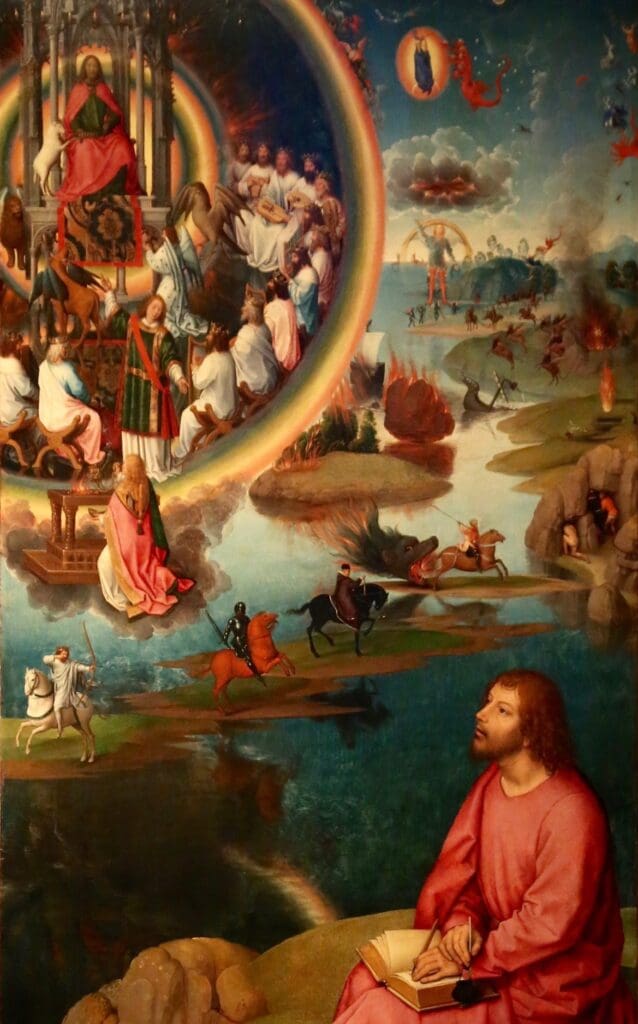
“On the first day of creation, I shall make the heavens and stretch them out; so will Israel raise up the Tabernacle as the dwelling-place of My glory. On the second day, I shall put a division between the terrestrial waters and the heavenly waters; so will he hang up a veil in the Tabernacle to divide the Holy Place and the Most Holy. On the third day, I shall make the earth put forth grass and herb; so will he, in obedience to My commands, eat herbs on the first night of the Passover, and prepare showbread for Me. On the fourth day, I shall make the luminaries; so will he make a golden candlestick for Me. On the fifth day, I shall create the birds; so will he fashion the cherubim with outstretched wings. On the sixth day, I shall create man; so will Israel set aside a man of the sons of Aaron as high priest for My service.”
Writers such as Louis Ginzburg, Margaret Barker, and Jeffrey Morrow have reminded readers that the days of creation—which are also reflected and explained by the construction and set-up of the Tent of Meeting—not only reflect what was visually seen and shown on Mount Sinai, but the early Fathers help us to recall that they also symbolize the promised future in which all descendants of Man and Woman would be granted access to the Holy of Holies.
Eden and the Plan in Christ
Originally, God wanted all of Israel, and not just the Levites, to be a kingdom of priests (cf. Exodus 19:6) and abide in the covenantal sonship which gave entrance to the Holy of Holies: “My covenant which they broke, though I was their husband, says the Lord” (Jeremiah 31:32b). Thus, the Tabernacle abided as a sign and promise: “Behold, the days are coming, says the Lord, when I will make a new covenant with the house of Israel and the house of Judah, not like the covenant which I made with their fathers when I took them by the hand to bring them out of the land of Egypt [and gave the Tent]” (cf. Jeremiah 31:31-32a). God clarified his intentions [εννοιών]: “I will put my law within them, and I will write it upon their hearts; and I will be their God, and they shall be my people” (Jeremiah 31:33). What was exterior to man (transcendence) must become interior and somehow consolidated within man’s freedom, as Gregory of Nazianzen says, “in order that good might belong to him as the result of his choice.” The very life and partaking in the divine nature was promised to be interiorized from the very beginning and as exercised through sacramental participation in the Tabernacle.
The Levitical High Priest was clothed by God’s representative (cf. Leviticus 8) in garments which were instituted by God’s design for service in the earthly Temple. Man does not give or achieve divine likeness by his own power, but by God’s prior and empowering love. In this prefigurement, man received a divine likeness that was only exterior because the Messiah had not yet come. The priest prefigured the Messiah to come and as promised by Moses (see Deuteronomy 18:18; John 6:14). However, the likeness to God was always destined to be interiorized by a new creation inside of man (grace); adoption had to be made into actual sharing in likeness of nature (cf. 2 Peter 1:4-5).
Just as looking at the experiences of Moses at Mount Sinai and at the Tabernacle gives us context to unpack the highly symbolic narratives of Eden, so also accepting the liturgy that Jesus established in the Upper Room helps unpack the highly symbolic narratives in the Book of Revelation and being gathered with the Lamb at Mount Zion.
For this reason, God’s true and natural Son clothed himself in earthly flesh to assume the Priesthood that was lost by man at Adam’s sin (and Mount Sinai). The incarnation made possible restoration of humans into the true Temple for access to the Tree of Life (Revelation 22:14): the temple not made with earthly hands. In Jesus, divinity became clothed by visible humanity, the great Sacrament of Christ’s humanity. Man no longer contemplates objects in an earthly Tabernacle to attain divine knowledge; now he contemplates Christ’s visible humanity to be elevated into the heavenly. “And we all, with unveiled face (like Moses in the Tent), beholding the glory of the Lord (through faith in Christ), are being changed into his likeness from one degree of glory to another” (2 Corinthians 3:18).
For this reason, the Book of Revelation is best understood not only as a true vision, but a contemplation of the True Temple which comes down from heaven at every Eucharistic celebration (cf. Revelation 3:12; 21:14, 23): a contemplation of the mystery of the risen and ascended Jesus Christ. Herein is realized what is witnessed within the fragments of writings attributed to the early bishop Papias who was also close to Polycarp, the bishop of Smyrna and an Apostolic Father. The early Church understood that Genesis and the Garden of Eden ultimately pointed to the Heavenly Jerusalem that was to come: “Taking occasion from Papias of Hierapolis, the illustrious… and Clemens, and Pantaenus the priest of [the Church] of the Alexandrians, and the wise Ammonius, the ancient and first expositors, who agreed with each other, who understood the work of the six days as referring to Christ and the whole Church.”
Just as looking at the experiences of Moses at Mount Sinai and at the Tabernacle gives us context to unpack the highly symbolic narratives of Eden, so also accepting the liturgy that Jesus established in the Upper Room helps unpack the highly symbolic narratives in the Book of Revelation and being gathered with the Lamb at Mount Zion. Active participation in the liturgy includes remembering how to translate the symbols in the Book of Revelation to understand and receive the unseen realities in which we participate sacramentally. Like Moses, Christians now commune in the true presence of God with every Holy Communion that brings us into the Holy of Holies. Jesus has become the true Mercy Seat upon which the Father’s presence is communicated to us and makes us sons in the Son.
“The east supersedes the Jerusalem Temple as symbol. Christ, represented by the sun, is the place of the Shekinah, the true throne of the living God. In the Incarnation, human nature truly becomes the throne and seat of God, who is thus forever bound to the earth and accessible to our prayers.”
Matthew A. Tsakanikas is an associate professor of theology at Christendom College, Front Royal, VA, and editor of catholic460.com; the website where he makes available free manuscripts, videos, and articles. He also publishes on catholic460.substack.com.
